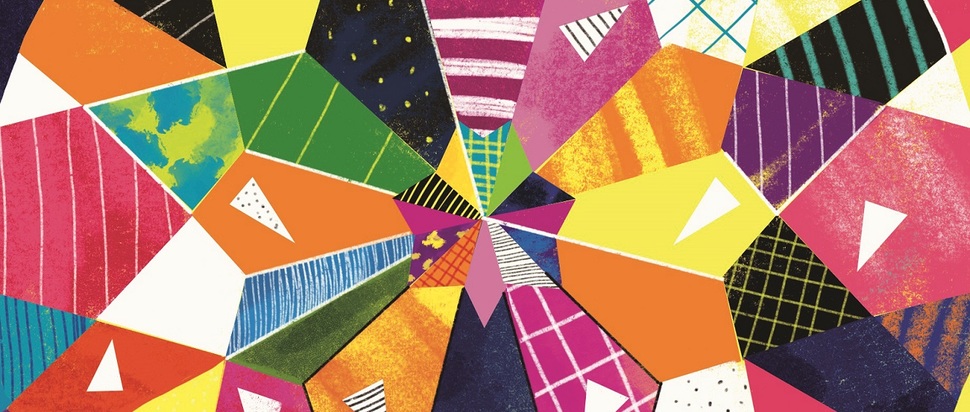Kaleidoscopes of Gender: On using multiple pronouns
Gender is always in flux and so are pronouns we use to describe our gender identity. One writer explores their/her pronouns and speaks to others about their relationships to using multiple pronouns
Society often thinks of gender as a spectrum with two binaries on either side – women, who use the pronouns she/her, and men, who use the pronouns he/him – and in between the two, lies a grey area of non-binary people who typically use the pronouns they/them. But what this limited spectrum doesn’t accurately convey is how gender, like sexuality, is an incredible kaleidoscope: agender, pangender, gender fluid, genderqueer, cisgender, gender outlaw (sounds awesome), non-binary, bi-gender, omnigender… The list goes on and on. With many different gender identities, it makes sense that sticking to one set of pronouns (i.e. she/her, they/them or he/him) wouldn’t be a comfortable fit for everyone.
Daisy (they/she) relates to this feeling of not being quite at home with the gender binary spectrum. “I think I actively don't relate to the version of 'woman' that is in media and celebrated as the norm. I feel androgynous, sometimes elements of feminine or masculine energies are stronger but I mostly feel a bit wibbly wobbly in the middle.” Harry (they/she) feels similarly: “She/her don’t hold my identity for a number of reasons; it doesn’t fit my relationship with my soul or body. It's like wearing the shoe of someone who’s the same size but has a different weight and gait so it feels off. My soul and body don’t fit with conventional, patriarchal expectations of cis female persons.”
Drew (he/they) reiterates this estrangement: “I believe my pronouns say that I am a male, but a 'weird' one, one that doesn't typically ascribe to everything that is male. I grew up believing I was going to be female; I was taunted as such, socialised as such and I fully did not want anything to do with what was 'for boys.' As an adult, I’ve always been incredibly 'femme', again bullied as such.”
Tammy (he/she)’s case is a little different as she is intersex, meaning that she was born with both female and male reproductive organs. His ongoing understanding of his gender has gone hand in hand with recognising his biology. “People struggle,” Tammy says. “They don’t get that I have never been able to be a girl or a boy, I’ve always been both but was forced to be a girl. I’m in my 40s now and only realising that I was never meant to be one gender – I’m both. I spent so many years confused, lost, scared.” I ask Tammy if he's had any moments of people using her multiple pronouns properly. “To be honest, people always look at me like – are you a man or a woman – and end up using “they” and so for a long time I identified as non-binary and would roll with that. It wasn’t until I started saying, 'No, it’s she or he,” that things started to click for me.'
Just like Tammy, Harry, Drew and Daisy, the gender I am often assigned by people doesn’t seem to fit my full story. For me (I use they/she pronouns), woman-ness has often felt like a strain. I felt like a lot of what defined me as a 'woman' was linked to trauma, typically sexual, psychological or physical. Daisy reiterates this feeling: “I was spiked when I was 18. Only recently have I understood that part of my mechanism to deal with that was to tell myself that my only role in life was to be the 'woman' having sex happen to me, rather than the reality that I am a person in the world who can give and receive sex with respect and compassion.”
I recognise playing that part. I understand 'woman' as a part of me but not my definition. A woman+ or, perhaps, a non-binary person with a woman-esque part. Just as it’s a kaleidoscope, our relationship with gender is constantly shifting and changing. I don’t have a fully formed answer for my gender, but I know that it’s somewhere in that spiralling, emerging, disappearing, colourful chaos. And if I never manage to see it or iterate it exactly, I’m a lot more comfortable within that chaos than anywhere else.
Care and kindness is often as important as getting pronouns right. As Harry says, “I feel lucky to not have a binary gender, so am happy with any pronoun so long as it’s spoken with compassion and respect.” Expressing confusion or frustration does not create a safe space. I still ruminate on a friend responding with an “ergh, gross” when discovering I was queer and it has meant I am hesitant in spaces to share pronouns, even with my nearest and dearest. This also means that it isn’t always safe for the person you’re asking to express their pronouns if prompted. Be mindful. For example, when discovering someone uses multiple pronouns, I often consciously lean into using the one I imagine they experience the least – a small but often detectable signal of allyship. As Drew so perfectly puts it: “My gender feels flexible, and my pronouns express that, and sometimes it feels like the language that surrounds this is the most liberating part of it… My pronouns now feel like a reclamation of me.” We should all be supporting that liberation through exploring, playing and caring for the language we use.
